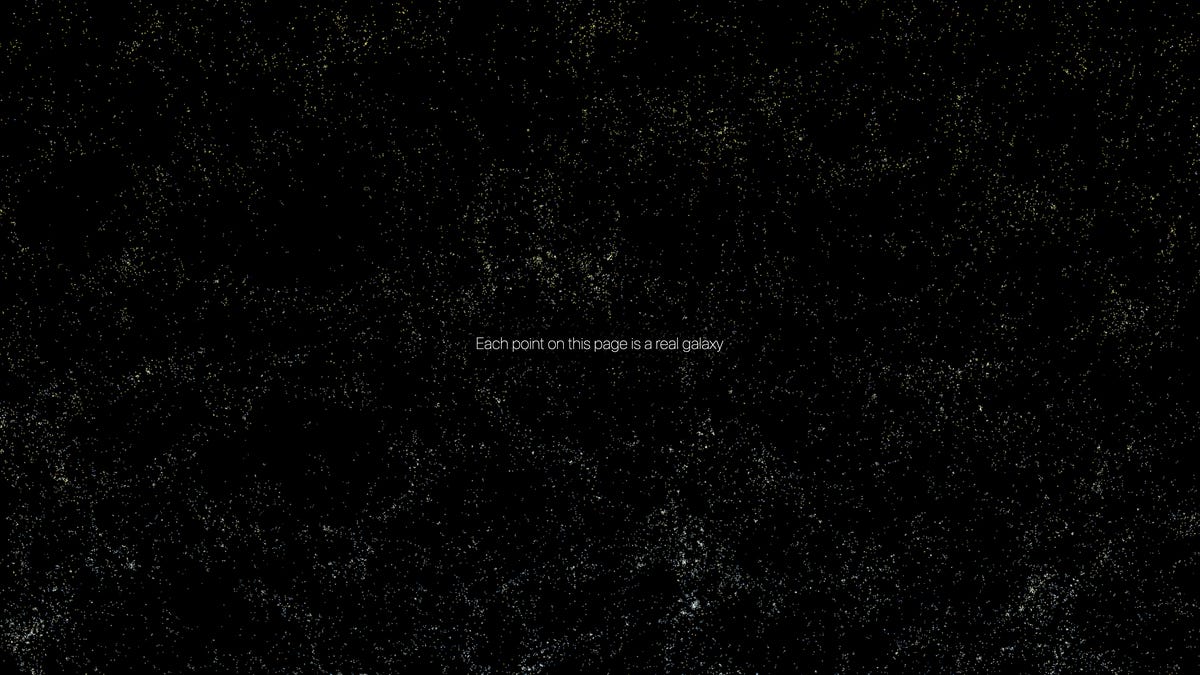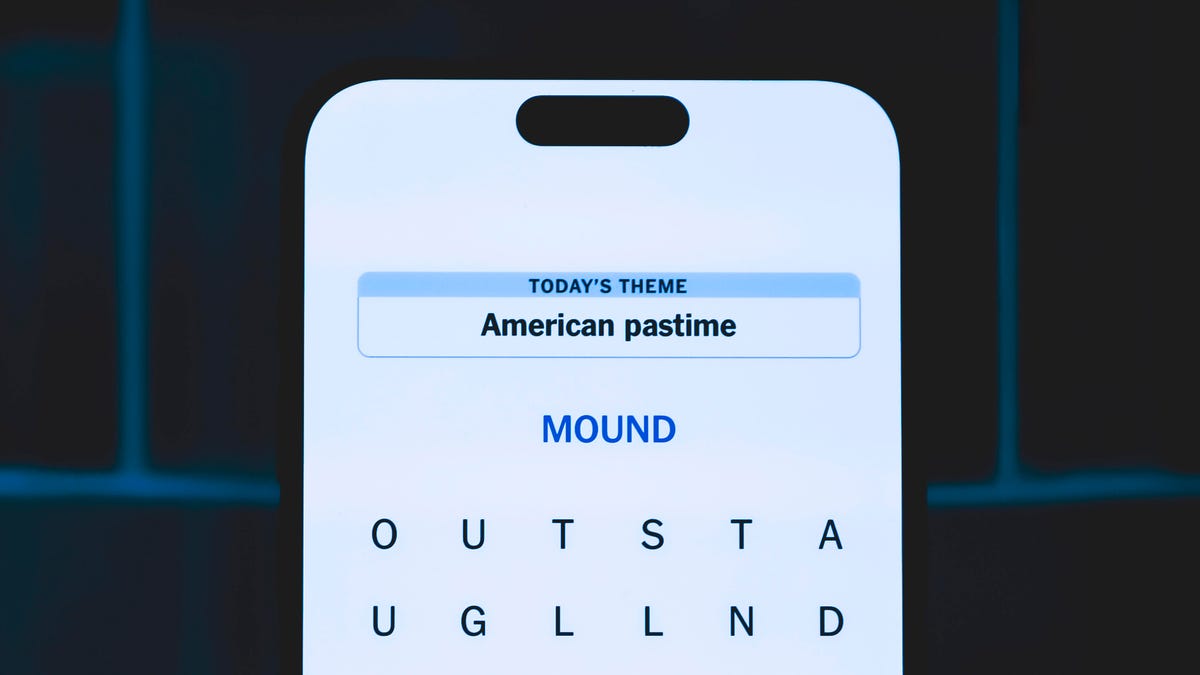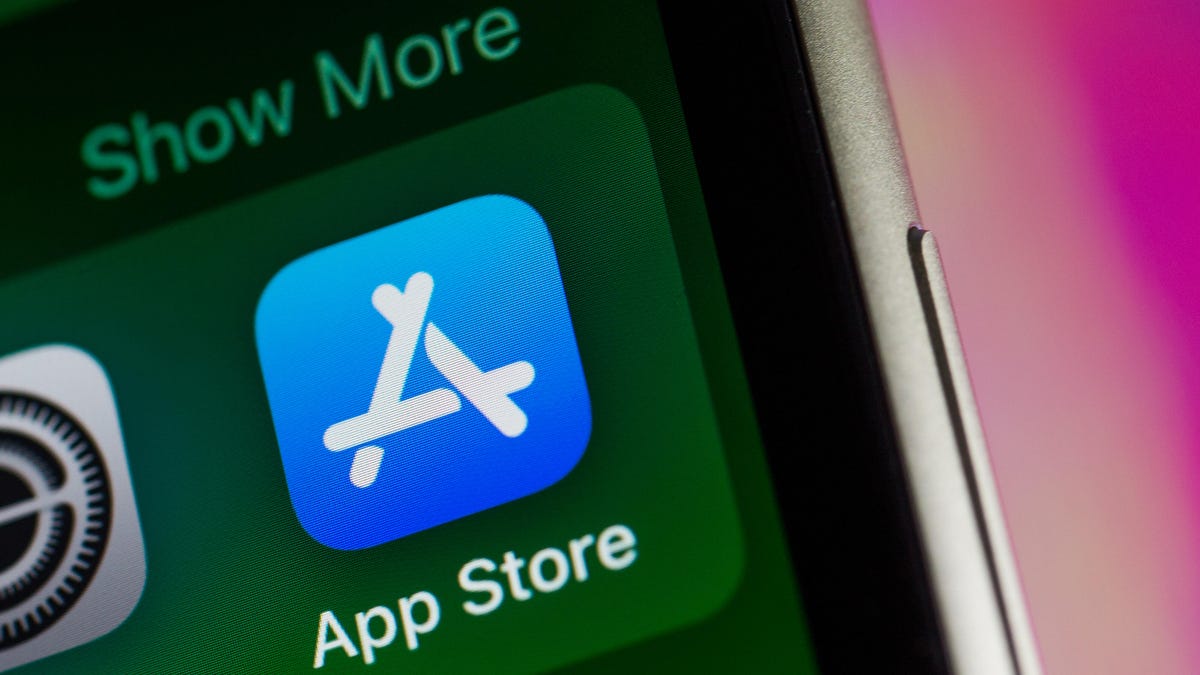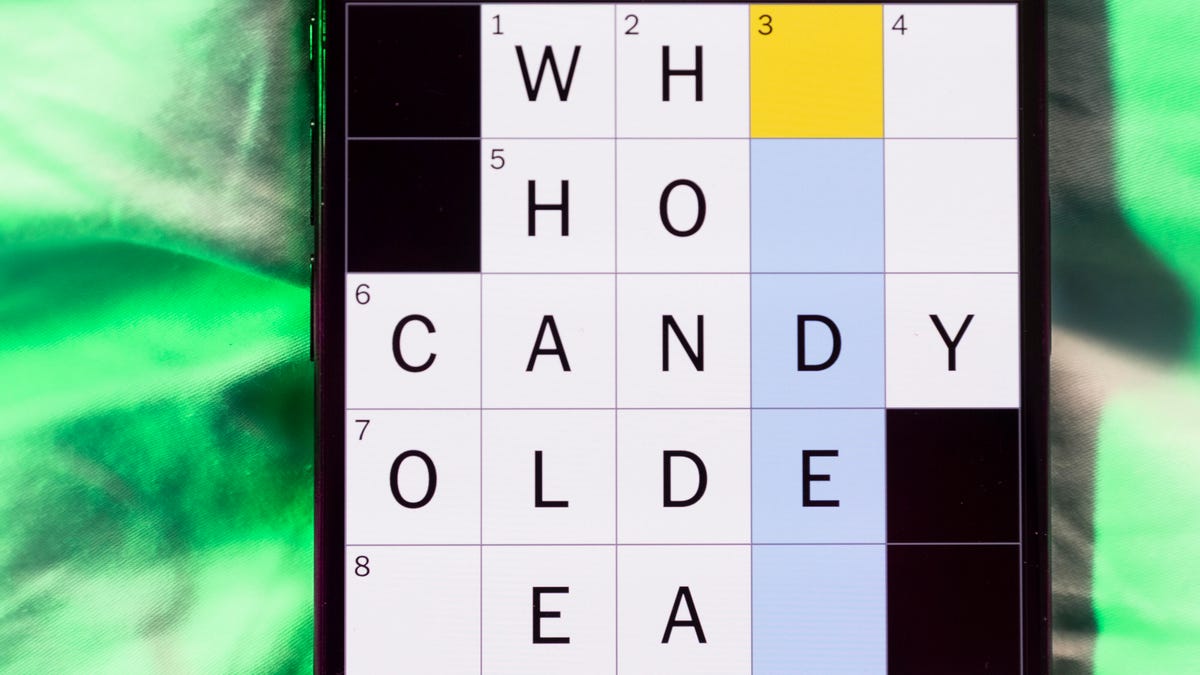Technologies
This Scrollable Map of the Universe Reminds Us How Tiny We Really Are
It’s a bit unsettling to scroll through this website scientists made to detail the observable universe. I highly recommend doing it.

When you open up Johns Hopkins University Professor Brice Ménard’s «map of the observable universe,» you’re met with a geometric diagram overflowing with thousands of rainbow freckles, each neatly organized by color. At the bottom of this diagram lies an unnerving phrase.
«You are here.»
One negligible, barely visible dot on this graph represents our entire Milky Way galaxy — a realm with billions of stars besides our own sun, and one we occupy such a small percentage of I don’t even want to attempt writing it out.
With a single pixel, Ménard stunningly puts into perspective the cosmic brevity of everything we’ve ever truly known as human beings.
«This map, representing galaxies just as little dots, allows the viewer to basically understand different scales at the same time,» Ménard said in an overview of the interactive mechanism. «Seeing the vastness of the universe — it’s quite inspiring.»
Scrolling around the 200,000 galaxies in the map — placed in accurate, relative positions to one another — is calming because it reframes how inconsequential the footprint we place in the universe is. It’s disturbing for precisely the same reason.
It draws a distinct parallel with Carl Sagan’s famous quote about Voyager 1’s breathtaking image of Earth from 1990, «Pale Blue Dot.»
«Look again at that dot. That’s here. That’s home. That’s us,» Sagan said. «On it everyone you love, everyone you know, everyone you ever heard of, every human being who ever was, lived out their lives. The aggregate of our joy and suffering, thousands of confident religions, ideologies, and economic doctrines, every hunter and forager, every hero and coward, every creator and destroyer of civilization, every king and peasant, every young couple in love, every mother and father, hopeful child, inventor and explorer, every teacher of morals, every corrupt politician, every ‘superstar,’ every ‘supreme leader,’ every saint and sinner in the history of our species lived there — on a mote of dust suspended in a sunbeam.»
Though if you’re blown away by the deceptively concise magnitude of Ménard’s map, consider how it doesn’t even account for every galaxy in the universe. In reality, NASA estimates there are something like a hundred billion galaxies unfolding eternities beyond our own.
We’d need an unfathomable level of observable universe cartography to encapsulate the full breadth of the cosmos.
Slice of our universe
Along with a cadre of scientists, Ménard used data mined over two decades by what’s known as the Sloan Digital Sky Survey.
«Astrophysicists around the world have been analyzing this data for years, leading to thousands of scientific papers and discoveries,» Ménard said. «But nobody took the time to create a map that is beautiful, scientifically accurate, and accessible to people who are not scientists. Our goal here is to show everybody what the universe really looks like.»
Once you click «explore the map» under the Milky Way galaxy label, you arrive at a screen prompting you to «scroll up to travel through the universe.» That such a sentence even exists underscores just how far technology has come.
«From this speck at the bottom,» Ménard said, «we are able to map out galaxies across the entire universe, and that says something about the power of science.»
Even more impressive is how, as you follow the prompt, a ticker at the bottom left of the screen shows you how many billions of years back in time you’ve scrolled. Meanwhile, the dots go from gradients of pale blues to yellows to oranges to reds, ultimately retreating to a cool midnight hue.
«Each dot is a galaxy shown with its apparent color,» the page reads. «Spiral galaxies are faint and blue. Our galaxy, the Milky Way, is a blue spiral.»
Elliptical galaxies are shown as yellowish and brighter, while reddened speckles indicate realms that have grown distant enough for the light they emanate to stretch and appear to us on Earth as crimson blurs.
Further back 9 billion years, the map exhibits vivid blue spots to represent quasars rather than galaxies. These are extreme jets of light spewing out from the guts of black holes sitting at the center of certain galaxies.
Basically, it’s really hard to see galaxies from this era of cosmic history, reddened to the point of near-invisibility, but quasars are bright enough to act like flashlights. Their brilliance shines across the universe, revealing scenes otherwise shielded by darkness and softened with distance.
But beyond even those quasars lies a splotch of blackness — evocative of the mysteries lurking beyond the red end of the electromagnetic spectrum. Infrared waters.
«We encounter an epoch during which the universe is filled with hydrogen gas that prevents the propagation of visible light we could observe today. This epoch is called the «dark ages,'» the page reads.
NASA’s magnificent James Webb Space Telescope is such a big deal because it’s built to find secrets hidden in this region invisible to human eyes. Constructed with an army of high-tech infrared sensors, it’s working on detecting galaxies from near the beginning of time stuck in a limbo we cannot see with our minds or machines.
With each Webb discovery, hopefully maps like this one will become populated where their empty spaces currently sit.
And at the very, very top of the page, a marbled photo of the edge of the observable universe. The first flash of light emitted post-Big Bang, nearly 14 billion years ago. The Cosmic Microwave Background.
«We cannot see anything beyond this point,» the map concludes after you scroll back to the beginning of existence. «The light travel time to us is greater than the age of the universe.»
Technologies
Today’s NYT Strands Hints, Answers and Help for Dec. 25 #662
Here are hints and answers for the NYT Strands puzzle for Dec. 25, No. 662.

Looking for the most recent Strands answer? Click here for our daily Strands hints, as well as our daily answers and hints for The New York Times Mini Crossword, Wordle, Connections and Connections: Sports Edition puzzles.
Today’s NYT Strands puzzle has a holiday theme, and if you know a certain Christmas carol, you’ll quickly determine which words to hunt down. Some of the answers are difficult to unscramble, so if you need hints and answers, read on.
I go into depth about the rules for Strands in this story.
If you’re looking for today’s Wordle, Connections and Mini Crossword answers, you can visit CNET’s NYT puzzle hints page.
Read more: NYT Connections Turns 1: These Are the 5 Toughest Puzzles So Far
Hint for today’s Strands puzzle
Today’s Strands theme is: Carolers count.
If that doesn’t help you, here’s a clue: Five golden rings.
Clue words to unlock in-game hints
Your goal is to find hidden words that fit the puzzle’s theme. If you’re stuck, find any words you can. Every time you find three words of four letters or more, Strands will reveal one of the theme words. These are the words I used to get those hints but any words of four or more letters that you find will work:
- RIMS, HIMS, MARS, CHIME, CHIMES, MADS, DATE, DIAL, WAIL
Answers for today’s Strands puzzle
These are the answers that tie into the theme. The goal of the puzzle is to find them all, including the spangram, a theme word that reaches from one side of the puzzle to the other. When you have all of them (I originally thought there were always eight but learned that the number can vary), every letter on the board will be used. Here are the nonspangram answers:
- LORDS, MAIDS, SWANS, LADIES, PIPERS, DRUMMERS
Today’s Strands spangram
Today’s Strands spangram is CHRISTMASDAYS. To find it, look for the C that’s three letters down on the far-left row, and wind across.
Don’t miss any of our unbiased tech content and lab-based reviews. Add CNET as a preferred Google source.
Toughest Strands puzzles
Here are some of the Strands topics I’ve found to be the toughest in recent weeks.
#1: Dated slang, Jan. 21. Maybe you didn’t even use this lingo when it was cool. Toughest word: PHAT.
#2: Thar she blows! Jan.15. I guess marine biologists might ace this one. Toughest word: BALEEN or RIGHT.
#3: Off the hook, Jan. 9. Similar to the Jan. 15 puzzle in that it helps to know a lot about sea creatures. Sorry, Charlie. Toughest word: BIGEYE or SKIPJACK.
Technologies
Judge Blocks Texas App Store Age-Check Law
A preliminary injunction found the Texas law, set to begin Jan. 1, is «more likely than not unconstitutional.»

A new Texas state law set to take effect on Jan. 1 would have required app stores to implement age verification processes. But the law has been put on hold, at least temporarily, by a federal court judge.
As reported by the Texas Tribune, Senate Bill 2420, also known as the Texas App Store Accountability Act, is the subject of a temporary injunction issued by US District Judge Robert Pitman.
Pitman said in his decision that the law as written is broad, vague and «more likely than not unconstitutional.» However, he also wrote the court «recognizes the importance of ongoing efforts to better safeguard children when they are on their devices.»
Don’t miss any of our unbiased tech content and lab-based reviews. Add CNET as a preferred Google source.
The Texas law, signed into law by Governor Greg Abbott in May, requires app store operators — including Apple, Google, Nintendo, Steam and more — to build age verification processes for the storefronts and to only allow downloads to minors who obtain parental consent. The injunction is a ruling in an October lawsuit filed by the Computer & Communication Industry Association.
CCIA senior vice president Stephanie Joyce said in a statement, «This Order stops the Texas App Store Accountability Act from taking effect in order to preserve the First Amendment rights of app stores, app developers, parents, and younger internet users. It also protects parents’ inviolate right to use their own judgment in safeguarding their children online using the myriad tools our members provide.»
Other individuals and the advocacy group Students Engaged in Advancing Texas also filed suits over the law, the Texas Tribune reported.
App Store Accountability Act
The bill author, State Senator Angela Paxton, said the bill was meant to give parents «common sense tools to protect their kids and to survive court challenges by those who may have lesser priorities.»
The language of Texas Senate Bill 2420 does not only include mobile app stores from Apple or Google, but any «website, software application, or other electronic service that distributes software applications from the owner or developer of a software application to the user of a mobile device.»
By that definition, websites with links to browser games or mobile game consoles with download options would fall under the Texas law as written. The law also defines mobile devices as including phones and tablets, as well as any other handheld device capable of transmitting or storing information wirelessly.
The parental consent aspect of the law requires those under 18 to have an app store account affiliated with a parent or guardian to purchase or download applications.
Age verification elsewhere
In an effort to keep adult materials out of reach of minors and to protect children from potentially harmful content and interactions, tech companies have been compelled by law or through legal action to verify the age of users.
Roblox, which has a huge audience of minors, began rolling out stricter age verification after investigations and lawsuits hurt its reputation as a safe gaming space. Australia is perhaps the most large-scale example of a government restricting access to online content. In December, Australia began restricting social media access to those 16 and older. Reddit recently challenged that law.
In the US, age verification laws have primarily targeted adult sites. Texas already has a law on the books that requires adult sites to age-block their content. The Supreme Court upheld that law in a June ruling. The UK has also enacted age restriction rules for adult sites as have other US states.
Technologies
Today’s NYT Mini Crossword Answers for Thursday, Dec. 25
Here are the answers for The New York Times Mini Crossword for Dec. 25.

Looking for the most recent Mini Crossword answer? Click here for today’s Mini Crossword hints, as well as our daily answers and hints for The New York Times Wordle, Strands, Connections and Connections: Sports Edition puzzles.
Need some help with today’s Mini Crossword? Of course, there’s a very Christmassy clue involved. And once you solve the entire puzzle, look at the letters used in all the answers and see what they have in common. (5-Across will tell you!) Read on for all the answers. And if you could use some hints and guidance for daily solving, check out our Mini Crossword tips.
If you’re looking for today’s Wordle, Connections, Connections: Sports Edition and Strands answers, you can visit CNET’s NYT puzzle hints page.
Read more: Tips and Tricks for Solving The New York Times Mini Crossword
Let’s get to those Mini Crossword clues and answers.
Mini across clues and answers
1A clue: ___ King Cole, singer with the album «The Magic of Christmas»
Answer: NAT
4A clue: Body drawings, informally
Answer: TATS
5A clue: Letters to ___ (what this Mini was made with)
Answer: SANTA
6A clue: Huge fan, in slang
Answer: STAN
7A clue: «Illmatic» rapper
Answer: NAS
Mini down clues and answers
1D clue: Grandmothers, by another name
Answer: NANAS
2D clue: Abbr. before a name on a memo
Answer: ATTN
3D clue: Org. with long lines around the holidays
Answer: TSA
4D clue: «See ya later!»
Answer: TATA
5D clue: Govt.-issued ID
Answer: SSN
Don’t miss any of our unbiased tech content and lab-based reviews. Add CNET as a preferred Google source.
-

 Technologies3 года ago
Technologies3 года agoTech Companies Need to Be Held Accountable for Security, Experts Say
-

 Technologies3 года ago
Technologies3 года agoBest Handheld Game Console in 2023
-

 Technologies3 года ago
Technologies3 года agoTighten Up Your VR Game With the Best Head Straps for Quest 2
-

 Technologies4 года ago
Technologies4 года agoBlack Friday 2021: The best deals on TVs, headphones, kitchenware, and more
-

 Technologies4 года ago
Technologies4 года agoVerum, Wickr and Threema: next generation secured messengers
-

 Technologies4 года ago
Technologies4 года agoGoogle to require vaccinations as Silicon Valley rethinks return-to-office policies
-

 Technologies4 года ago
Technologies4 года agoOlivia Harlan Dekker for Verum Messenger
-

 Technologies4 года ago
Technologies4 года agoiPhone 13 event: How to watch Apple’s big announcement tomorrow
